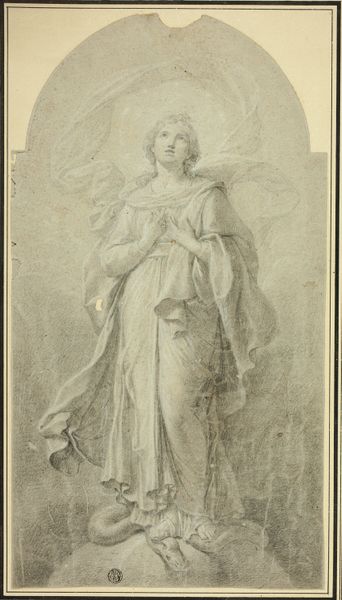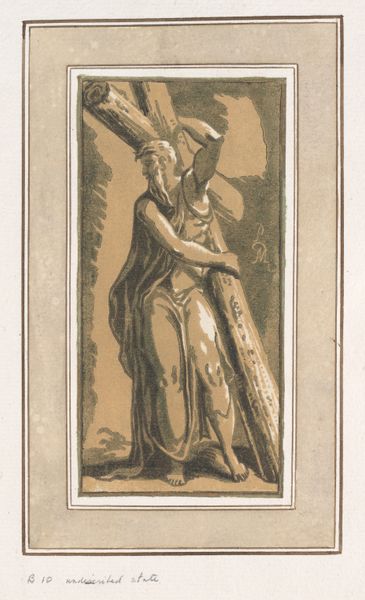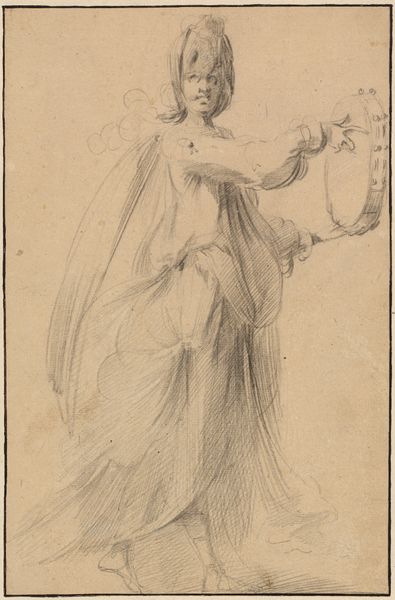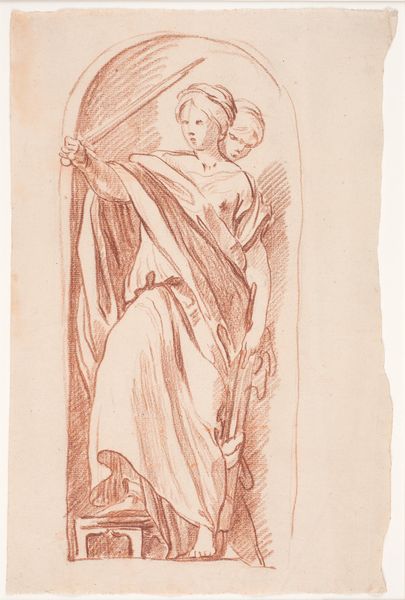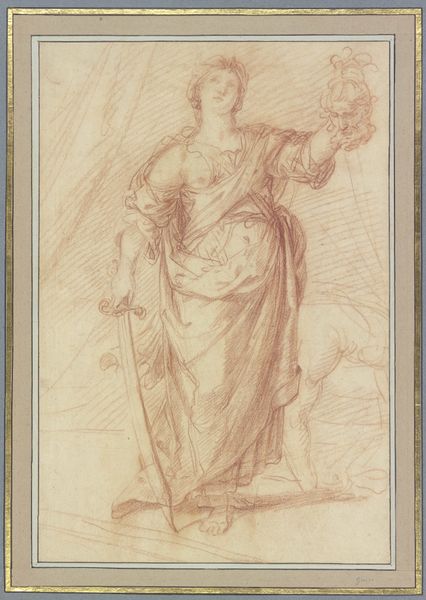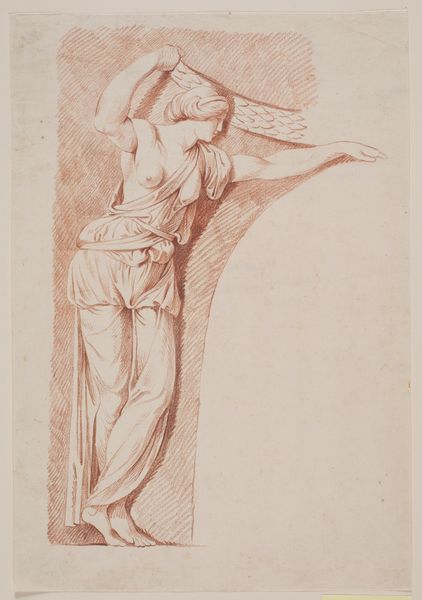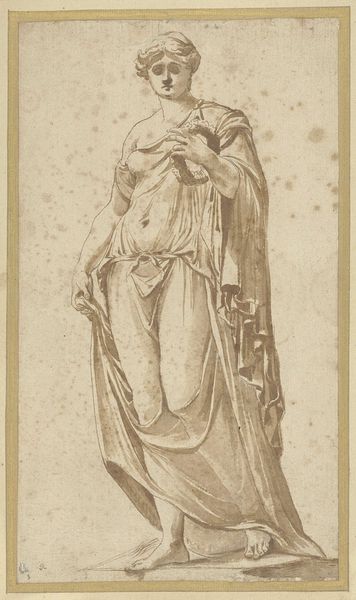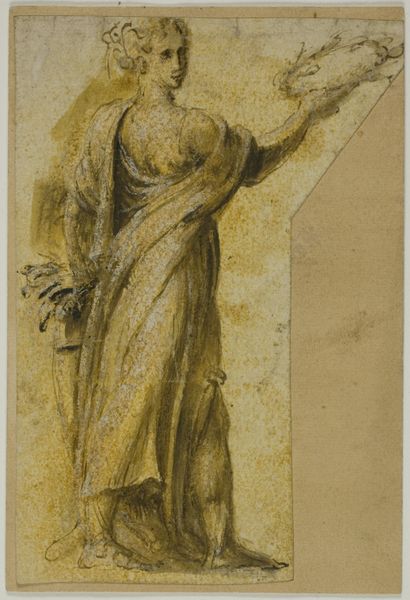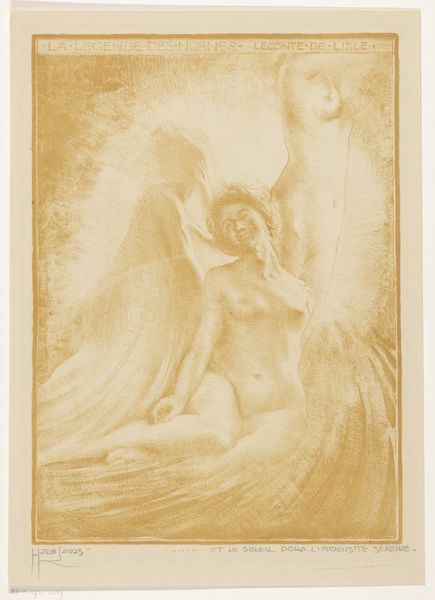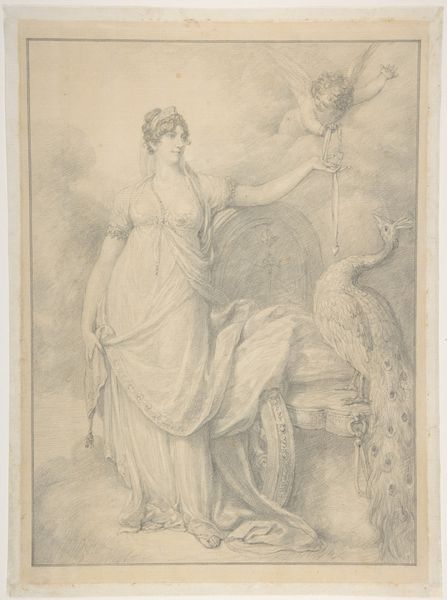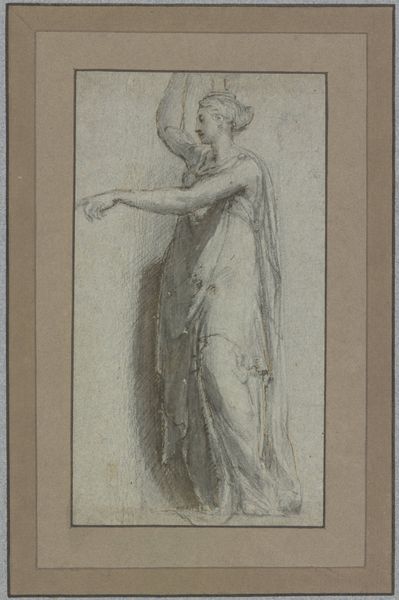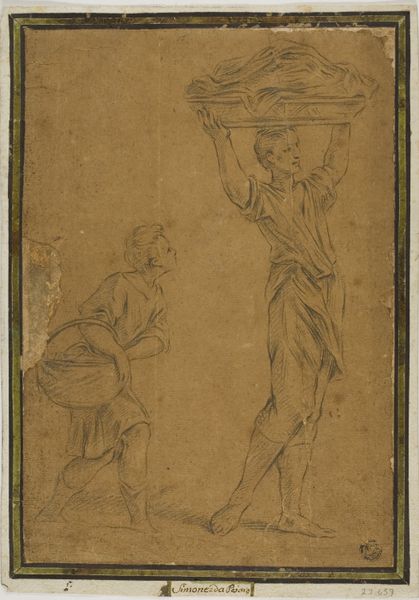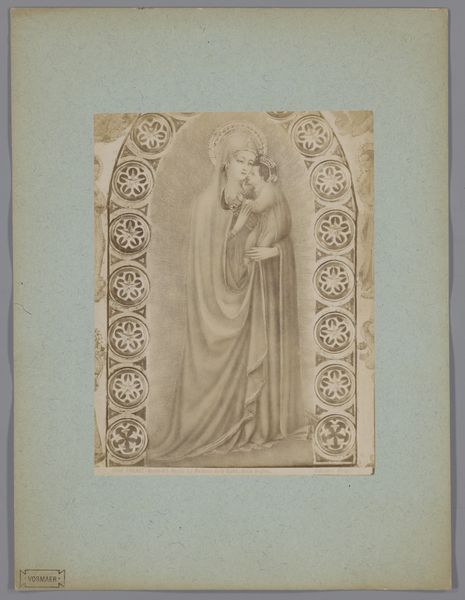
drawing, watercolor, pencil, charcoal
#
drawing
#
water colours
#
allegory
#
classical-realism
#
charcoal drawing
#
figuration
#
watercolor
#
pencil
#
charcoal
#
academic-art
#
watercolor
Dimensions: sheet: 25.9 x 41.5 cm (10 3/16 x 16 5/16 in.) mount: 30.5 x 45.5 cm (12 x 17 15/16 in.)
Copyright: National Gallery of Art: CC0 1.0
This is Biagio Pupini's "Study for Figure of Fame," made sometime between 1511 and 1551. It's a chalk and gouache drawing on blue paper. Pupini worked in Bologna, a city then under papal control, deeply influenced by the artistic legacy of ancient Rome. The figure of Fame, with her wings, trumpet, and laurel wreath, embodies the classical ideals of glory and recognition, yet consider how her representation intersects with the social realities of the time. Standing, she embodies the male gaze and the limited roles afforded to women in Renaissance society, but there's something about her gaze that feels knowing. She's caught between worlds: the idealized perfection of classical art and the messy, complicated realities of everyday life. What does it mean to be suspended between the earthly and divine? Consider how Pupini uses light and shadow to create a sense of depth and movement, inviting us to contemplate our own relationship to ambition and how the pursuit of "fame" shapes our identities and desires.
Comments
No comments
Be the first to comment and join the conversation on the ultimate creative platform.
